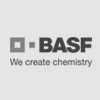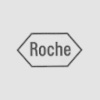Question:
I have read your receipes for SDS-PAGE. I know that reducing sample buffers are used to break the disulphide bonds in protein, and samples are boiled prior to loading in reducing sample buffer.
Could you please explain to me, when non-reducing and when reducing sample buffers are to be used? What is the difference in their application, to the proteins resolved on the gel?
Are samples to be boiled in non-reducing sample buffer, prior to loading?
Resolution:
Samples are also boiled in the non-reducing sample buffer.
The choice between reducing and non-reducing is purely dependant on the information you want to obtain. For instance, some antibodies do not react well in western blot when reducing sample buffer is used for the antigen electrophoresis.
Another application is in analyzing antibodies. The non-reduced IgG and reduced antibody molecule migrate differently - this can help detect other proteins co-purifying with the antibody (that might be the same MW (eg - ceruloplasmin). The contaminants will not show the same mobility differences as the IgG.
















